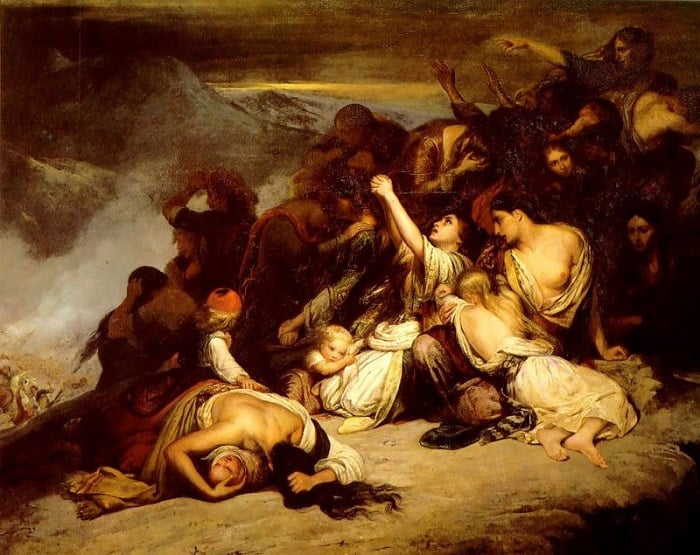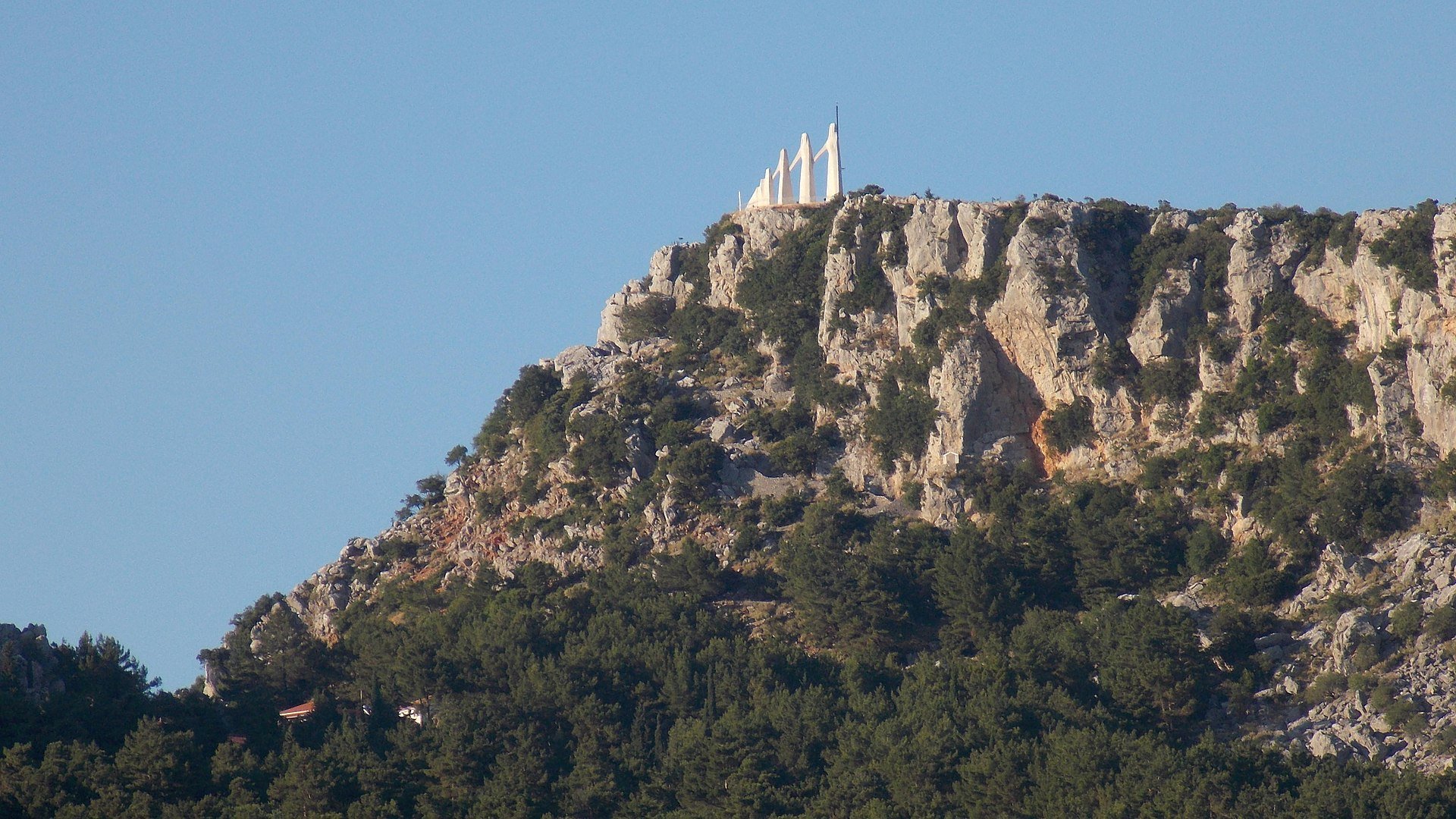
The Dance of Zalongo is considered to be a monumental act of bravery and defiance against the Ottoman rulers by the women of Epirus and stands as one of the most colorful pages in Greece’s history.
By the end of 1803, Epirus ruler, Ali Pasha, wanted to finish once and for all with the Souliotes, the rebel people of Souli, who had long been a problem for him and the Sultan. His army besieged Souli and forced them to sign a treaty on December 12.
The basic condition of the agreement, which was not observed, was for the Souliotes, including women and children, to evacuate their villages, and they would not be harmed.
On December 16th, the people of Souli divided into three phalanxes and left their ancestral land behind.
Women throwing their children off Zalongo
Two days later, the third phalanx, heading south, was attacked in Zalongo by a large body of Turkish-Albanian soldiers. During the violent fight that followed, a group of Souliotes was trapped by the enemy. Among them there were about 60 women, some of them pregnant.
In order to avoid capture, enslavement, and humiliation, the women threw their children off a steep cliff and then held hands while singing and dancing together. Their steps lead to the cliff where they jumped to their death one after the other.
The incident was soon known across Europe with the Dance of Zalongo becoming the ultimate symbol of heroism and self-sacrifice over the years.

A concrete testimony of the Zalongos Dance comes from Ali Pasha’s officer, Suleiman Aga, an eyewitness to the tragic incident. He spoke of the incident to the Islamic mercenary, Ibrahim Mansour Efendi, who wrote about it in his book, published in Paris in 1828 as the official memoirs of Ali Pasha’s Court.
Danced to their deaths
According to this testimony, women “held hands and started a dance, which was driven by unusual heroism, with the fear of death emphasizing its rhythm … At the end, exhausted, the women make a permeating and long cry with its echoes extinguished in the depths of a terrifying cliff, where they all fall together with their children.”
Prussian diplomat and traveler Jacob Bardoldi (1779 – 1825) was the first to record the event between 1803 and 1804.
A fighter in the Greek War of Independence and memoirist, Christophoros Perrevos (1773 – 1863) was the first Greek writer to refer to the Dance of Zalongos, in the second edition of the “History of Souli and Parga” (1815).
In 1888, scholar and historian Pericles Zerlentis (1852-1925), expressed doubts about the Dance of Zalongos, following on-the-spot research, without questioning the fact of the Souli womens’ self-sacrifice.
Many years later, philologist Alexis Politis, a professor at the University of Crete, claimed in an article in “The Politis” (2005) that the song that allegedly accompanied the women’s dance, the well-known “Farewell Poor World”, was mentioned for the first time in 1908.
Despite the fact that some historians doubt whether there was an actual dance and song, the self-sacrifice of the Souli women in order not to fall into the cruel hands of the Ottomans is indisputable.
See all the latest news from Greece and the world at Greekreporter.com. Contact our newsroom to report an update or send your story, photos and videos. Follow GR on Google News and subscribe here to our daily email!



